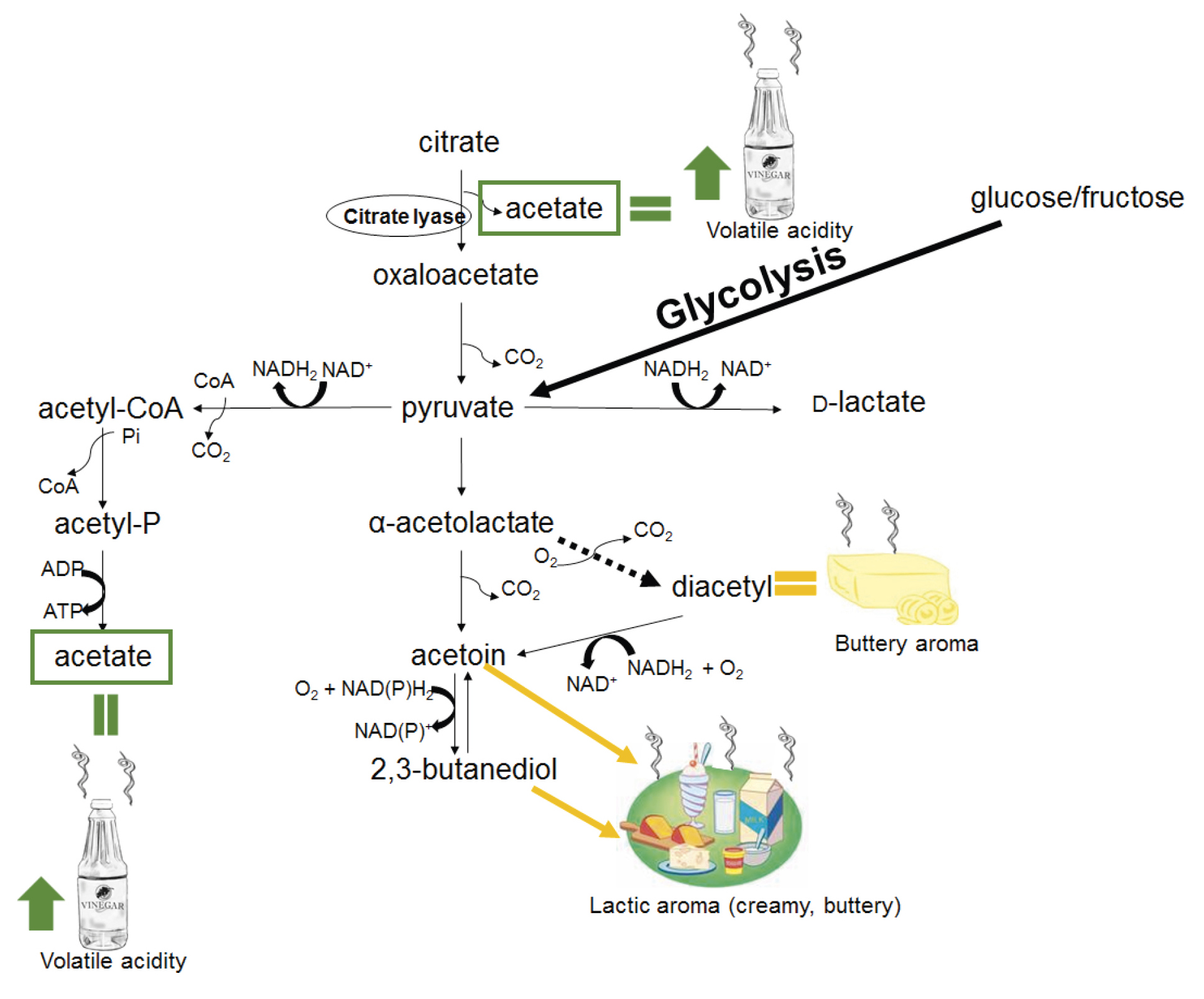
Using MLF to create a buttery wine or not
Publiée le 08/12/2017 16:10During the malolactic fermentation (MLF), Citric acid is degraded by bacteria into flavour compounds. One of them is associated with buttery aromas (diacetyl) which can mask the fruit of the wine. However, under specific conditions of vinification, it can be reduced in less aromatics compounds.
Various factors influence the amount of diacetyl, acetoin and 2,3-butanediol produced during fermentation impacting the buttery aroma.
Malolactic fermentation (MLF) is a secondary fermentation carried out by lactic acid bacteria (LAB). This process can occur spontaneously or can be induced by using MLF starter cultures. Currently, the commercially available MLF starter cultures belong to the species Oenococcus oeni and Lactobacillus plantarum.
The use of starter cultures to induce MLF is preferred to avoid the risks associated with spontaneous MLF. The starter cultures can be inoculated simultaneously with the yeast, known as co-inoculation, or after the completion of alcoholic fermentation, known as sequential inoculation. MLF is a desirable process as the decarboxylation of l-malic acid to l-lactic acid and carbon dioxide decreases the acidity and increases the microbial stability of wine. This process also influences the organoleptic properties of wine.
In addition to malic acid, some MLF starter cultures can also degrade citric acid usually present in grape must at concentrations of 0.031 g/ℓ to 0.42 g/ℓ. The metabolism of citric acid leads to the production of acetate, d-lactate, diacetyl, acetoin and 2,3-butanediol (Figure 1). The production of acetate is one of the reasons for the 0.1 g/ℓ to 0.3 g/ℓ volatile acidity increase during MLF as citric acid metabolism is linked to malic acid degradation.




